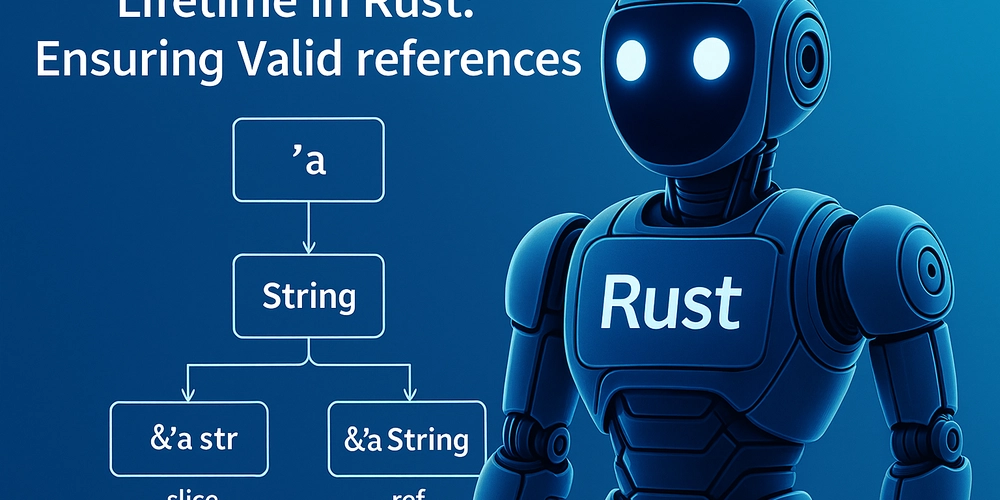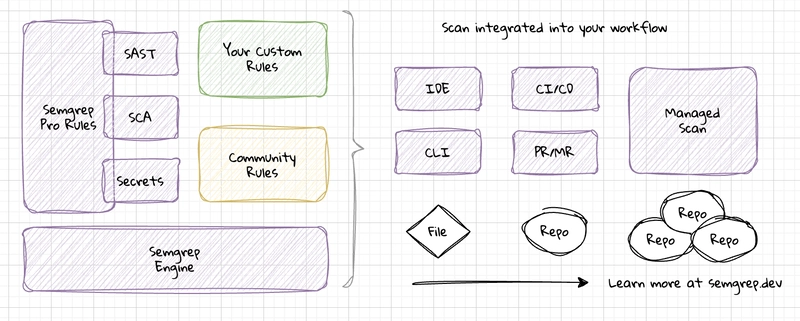Se Ownership é o coração de Rust e Borrowing é o cérebro, então Lifetime é o sistema nervoso que garante que tudo funcione em harmonia. O que é Lifetime? Em Rust, o tempo de vida (lifetime) é uma forma de garantir que as referências sejam válidas durante todo o período em que são usadas. Ele assegura que uma referência nunca aponta para um valor que já foi destruído, evitando erros como acessos a memória inválida. fn main() { let nome = String::from("Rust"); // 'nome' é válido aqui { let saudacao = &nome; // 'saudacao' empresta 'nome' println!("{}", saudacao); // 'saudacao' é válido apenas dentro deste bloco } // 'saudacao' não é mais válido aqui, mas 'nome' ainda é } Como funciona? O compilador de Rust analisa o código para garantir que as referências não sobrevivam aos valores aos quais estão associadas. Isso é feito através de anotações de tempo de vida, que explicitam as relações entre referências. Vamos analisar um exemplo mais detalhado: fn funcao(x: &'a i32, y: &'a i32) -> &'a i32 { x // Returns a reference with the same lifetime as the parameters } Detailed explanation: Function definition with lifetime fn funcao() -> &'a i32 { let x = 10; // 'x' is created here &x // Error! 'x' is destroyed at the end of the function, but the reference tries to live longer } Why is this important? The Lifetime system allows: Ensuring the safety of references without the need for garbage collection Avoiding bugs like invalid memory access or dangling references More robust and predictable code Rust forces you to think about how long the data is valid — and although it may seem complex at first, it gives you much more confidence and control over the behavior of the program.

Se Ownership é o coração de Rust e Borrowing é o cérebro, então Lifetime é o sistema nervoso que garante que tudo funcione em harmonia.
O que é Lifetime?
Em Rust, o tempo de vida (lifetime) é uma forma de garantir que as referências sejam válidas durante todo o período em que são usadas. Ele assegura que uma referência nunca aponta para um valor que já foi destruído, evitando erros como acessos a memória inválida.
fn main() {
let nome = String::from("Rust");
// 'nome' é válido aqui
{
let saudacao = &nome; // 'saudacao' empresta 'nome'
println!("{}", saudacao);
// 'saudacao' é válido apenas dentro deste bloco
}
// 'saudacao' não é mais válido aqui, mas 'nome' ainda é
}
Como funciona?
O compilador de Rust analisa o código para garantir que as referências não sobrevivam aos valores aos quais estão associadas. Isso é feito através de anotações de tempo de vida, que explicitam as relações entre referências.
Vamos analisar um exemplo mais detalhado:
fn funcao<'a>(x: &'a i32, y: &'a i32) -> &'a i32 {
x // Retorna uma referência com o mesmo tempo de vida dos parâmetros
}
Explicação detalhada:
- Definição da função com lifetime
fn funcao<'a>(...)
- Parâmetros da função
x: &'a i32, y: &'a i32
- Tipo de retorno da função
-> &'a i32
- Corpo da função
x // Retorna uma referência com o mesmo tempo de vida dos parâmetros
O que não se pode fazer?
Não se pode retornar uma referência que vive mais tempo do que o valor original. Isso evita que o programa acesse memória que já foi libertada.
fn erro<'a>() -> &'a i32 {
let x = 10; // 'x' é criado aqui
&x // Erro! 'x' é destruído no final da função, mas a referência tenta viver mais tempo
}
Porque é que isto é importante?
O sistema de Lifetime permite:
Garantir a segurança das referências sem necessidade de garbage collection
Evitar bugs como acessos a memória inválida ou referências pendentes
Código mais robusto e previsível
Rust obriga a pensar quanto tempo os dados são válidos — e embora pareça complexo no início, dá muito mais confiança e controle sobre o comportamento do programa.
If Ownership is the heart of Rust and Borrowing is the brain, then Lifetime is the nervous system that ensures everything works in harmony.
What is Lifetime?
In Rust, the lifetime is a way to ensure that references are valid throughout the period they are used. It ensures that a reference never points to a value that has already been destroyed, avoiding errors like invalid memory access.
fn main() {
let nome = String::from("Rust");
// 'nome' is valid here
{
let saudacao = &nome; // 'saudacao' borrows 'nome'
println!("{}", saudacao);
// 'saudacao' is valid only within this block
}
// 'saudacao' is no longer valid here, but 'nome' still is
}
How does it work?
The Rust compiler analyzes the code to ensure that references do not outlive the values they are associated with. This is done through lifetime annotations, which explicitly define the relationships between references.
Let's analyze a more detailed example:
fn funcao<'a>(x: &'a i32, y: &'a i32) -> &'a i32 {
x // Returns a reference with the same lifetime as the parameters
}
Detailed explanation:
- Function definition with lifetime
fn funcao<'a>(...)
- Function parameters
x: &'a i32, y: &'a i32
- Function return type
-> &'a i32
- Function body
x // Returns a reference with the same lifetime as the parameters
What can't you do?
You cannot return a reference that lives longer than the original value. This prevents the program from accessing memory that has already been freed.
fn erro<'a>() -> &'a i32 {
let x = 10; // 'x' is created here
&x // Error! 'x' is destroyed at the end of the function, but the reference tries to live longer
}
Why is this important?
The Lifetime system allows:
Ensuring the safety of references without the need for garbage collection
Avoiding bugs like invalid memory access or dangling references
More robust and predictable code
Rust forces you to think about how long the data is valid — and although it may seem complex at first, it gives you much more confidence and control over the behavior of the program.









































































































































































![[The AI Show Episode 144]: ChatGPT’s New Memory, Shopify CEO’s Leaked “AI First” Memo, Google Cloud Next Releases, o3 and o4-mini Coming Soon & Llama 4’s Rocky Launch](https://www.marketingaiinstitute.com/hubfs/ep%20144%20cover.png)




























































































































![[DEALS] The All-in-One Microsoft Office Pro 2019 for Windows: Lifetime License + Windows 11 Pro Bundle (89% off) & Other Deals Up To 98% Off](https://www.javacodegeeks.com/wp-content/uploads/2012/12/jcg-logo.jpg)




























![Is this too much for a modular monolith system? [closed]](https://i.sstatic.net/pYL1nsfg.png)






















































































































_Andreas_Prott_Alamy.jpg?width=1280&auto=webp&quality=80&disable=upscale#)






























































































![What features do you get with Gemini Advanced? [April 2025]](https://i0.wp.com/9to5google.com/wp-content/uploads/sites/4/2024/02/gemini-advanced-cover.jpg?resize=1200%2C628&quality=82&strip=all&ssl=1)












![Apple Shares Official Trailer for 'Long Way Home' Starring Ewan McGregor and Charley Boorman [Video]](https://www.iclarified.com/images/news/97069/97069/97069-640.jpg)
![Apple Watch Series 10 Back On Sale for $299! [Lowest Price Ever]](https://www.iclarified.com/images/news/96657/96657/96657-640.jpg)
![EU Postpones Apple App Store Fines Amid Tariff Negotiations [Report]](https://www.iclarified.com/images/news/97068/97068/97068-640.jpg)
![Apple Slips to Fifth in China's Smartphone Market with 9% Decline [Report]](https://www.iclarified.com/images/news/97065/97065/97065-640.jpg)



































































































































